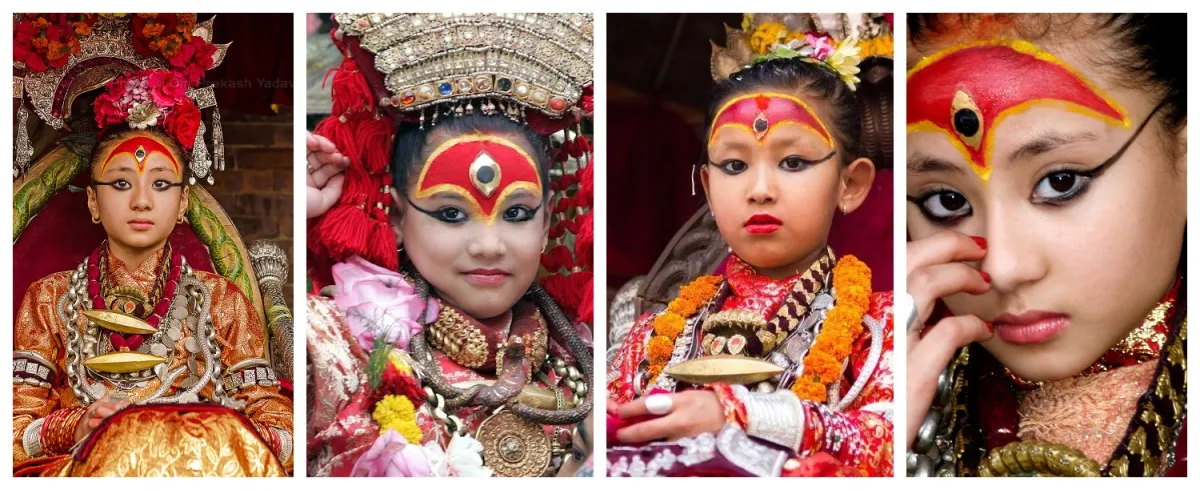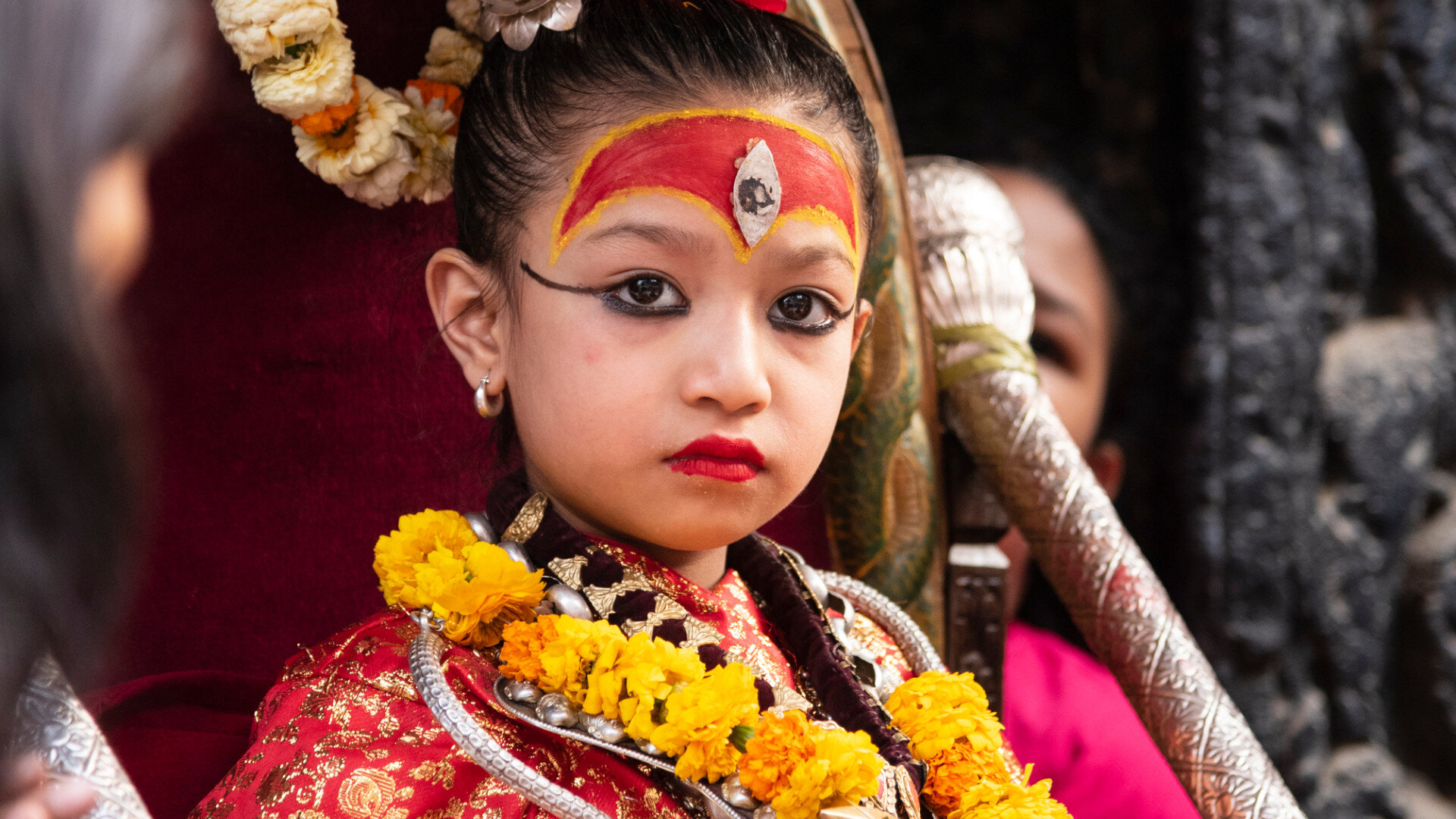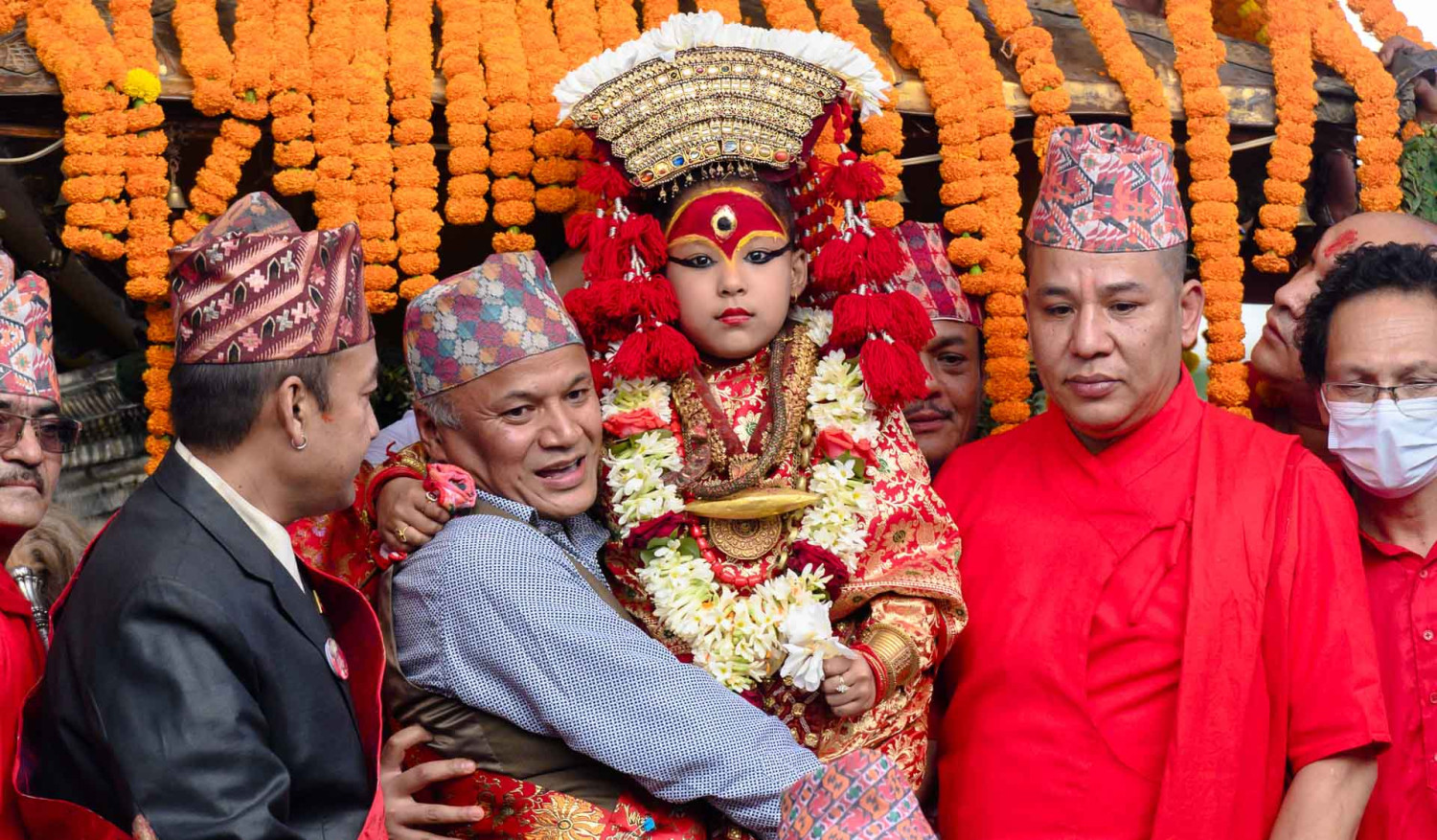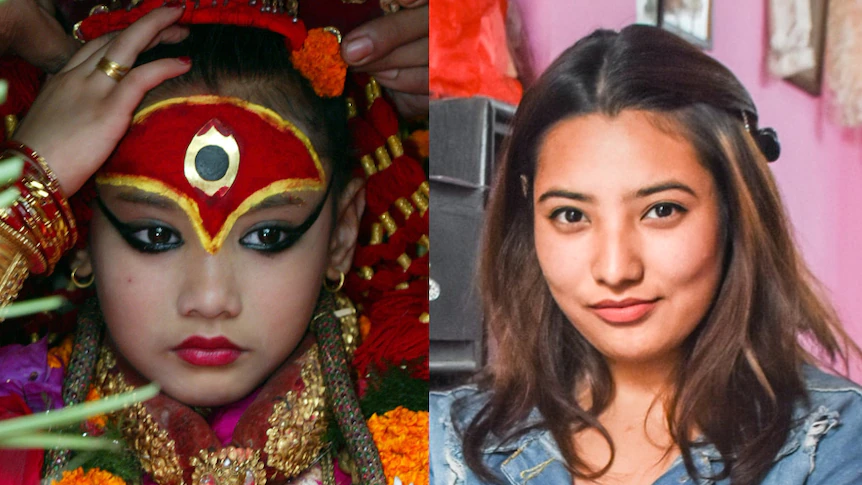The Living Goddess of Kathmandu: Who is Kumari?

In the beautiful and sacred streets of Kathmandu, an ancient and sacred rite of passage is alive and well, a rite that blends much of Hinduism and Buddhism into what is perhaps the most unusual form of living religion in the world. At the center of this rite is a prepubescent girl who is worshipped as an image of the divine feminine energy. Kumari, the Living Goddess of Kathmandu, is at the center of this living religion.
The Kumari is worshipped by both Hindus and Buddhists, revered by kings and commoners alike, and celebrated in great festivals. She is more than a mechanism of worship, she is a living god, and is a prophet in both the spiritual, cultural and political realm. But who is the Kumari? How is she selected? What is her life like behind the closed doors of the Kumari Ghar (Kumari Palace) ? In this blog, we will examine the origins, rituals, challenges, and evolving role of the Kumari in Nepalese society.
Understanding the Kumari: A Living Deity Among Us
The origin of the word “Kumari” is Sanskrit, meaning “virgin”, or “unmarried girl”. Culturally, a Kumari represents a human form of the goddess Taleju, a powerful form of the Hindu goddess Durga. A Kumari is chosen from the Newar community of the valley specifically, from the Shakya or Bajracharya clans of the Kathmandu valley and believed to be divine until she reaches menarche.
The Kumari tradition is fascinating because it (explicitly) combines spiritual devotion and lived experience. In proportional terms, for most cultures, it functions as human beings worship their gods through temples, statues, or images. In Nepal, the goddess lives with her people. she blesses, she smiles, as even a political ceremony as a revered font of wisdom and protection.
Historical Origins of the Tradition
The tradition of Living Goddess dates back hundreds of years, to the reign of King Jayaprakash Malla, during the mid-18th Century. Malla is considered the last of the Malla kings in Kathmandu. Legend has it that the goddess Taleju came to Malla every night, to roll dice with him and to talk about the affairs of the kingdom. One night, the king touched himself inappropriately and the goddess Taleju went away angry. Before she left, however, she told the king that he would find her spirit—in all her divine qualities, in a young girl from the Shakya community.
Since then, the practice has been done by every king and, for now, the government of the republic has also continued the tradition. The tradition continued for centuries, without a break, through an extraordinary series of political changes of Kathmandu, including the end of the monarchy in 2008. The tradition is an important component of Nepali national identity and cultural heritage.
The Criteria for Becoming a Kumari
The Kumari selection process is formally robust and rich in symbolism. Only girls from either the Shakya or Bajracharya families that follow the Newar Buddhist line can be candidates. These families are goldsmith caste as per the caste system in Nepal. The children must be in good health and must demonstrate no physical or mental defects. She must also be blemish-free and absent of marks including moles or blemishes. Her horoscope must also be valid as a Kumari to that of the nation’s ruler or protector.
In addition to being blemish free, the Kumari should demonstrate courage, calm, and fearlessness. One of the most known tests in the Kumari selection process is the Bhairav test. The girls are taken in to a darkened room with severed heads of the animals that had been sacrificed for Dashain. The girls are watched for how they react to the frightening sight and sounds. The girl that remains closest to calm is the girl who has the fearless disposition of the goddess and passes the test.

After the girl is selected, she will go through a purification process and then be ceremonially installed in the Kumari Ghar inside Kathmandu Durbar Square.
Life Inside the Kumari Ghar
The Kumari lives in a sweet three-story red-brick palace from the 1700’s. The palace, Kumari Ghar, has elaborate wood-carved windows and holy courtyards. The building is a UNESCO World Heritage Site and draws thousands of tourists and pilgrims every year.
George Taylor noticed forty worshippers lingering in the hall outside the kumari’s chambers waiting for letters indicating they were to worship the girl. All villagers regard the kumari as a living God. This girl is a traveling goddess who metes out feminist justice. But she is confined to a palace and defined by her holiness in ways that prevent movement and fragility. The girl is treated like a deity, waited on by caretakers, priests, and attendants. She never puts her feet on the ground to preserve her holiness. Whenever she leaves her area, she is carried by the attendants (from courtyard to courtyard) in a palanquin or special seat.
In practicing an honor and divine role, the Kumari is so worshipped and holy, it places her in a kind of silence. While the Kumari is worshipped by thousands (if not more), no one will be hearing or recording their actual experiences with her around which she establishes relationships. As the Kumari, she receives private schooling in the palace chapel, but every aspect of her life is restricted to the palace with limited contact granted with the outside world. Family visits welcomed, of course, must follow rules, traditions, and schedules of ritual.
Even though the Kumari is treated as sacred, she is a child; she plays, giggles, and learns, but watched by tradition. Her childhood is sheltered and circumscribed to a certain extent; she is a goddess but a girl, and she lives in a world with obligations that would be overwhelming for most adults.
Public festivals and appearances
The Kumari never makes a public appearance, and when she does, the city is imbued with energy. One of the biggest appearances is during Indra Jatra, a Hindu festival in honor of rain god Indra that happens every September in Kathmandu. Indra Jatra is a week-long celebration of the monsoon season’s culmination. The Kumari is taken in a chariot ornamentally decorated with hues through the streets of the old city, preceded by music, dance, and the devotees dressed in romantic attire who create a sea of devotees encircling the Kumari.
Besides Indra Jatra, the Kumari is seen also during dhamaka festivals of Dashain, Tihar, Kumar Shashthi, and Basantapur Jatra. She is taken to other temples and royal palaces in these festivals and her visit is a sheltering sign of good fortune and prosperity. Even nowadays, now if a political leader is about to inaugurate an event of state, or a national issue, they will seek the blessings of the Kumari.

The Kumari embodies Shakti. To grasp Shakti, we must pierce rituals, and gaze in the direction of symbolism. Shakti is feminine divine energy in Hindu and Buddhist thought. While gods who are typically male are embodied as warriors and sages (e.g., Shiva). The Kumari actualizes power through stillness, innocence, and divine cleanliness. The Kumari also symbolizes continuity and equilibrium.
Life After the Kumari Reign
When the Kumari realizes puberty, typically about the age of twelve or thirteen, she is thought to lose her divine status. Her first menstruation is regarded as a definitive sign that the goddess Taleju has left her body. The Kumari then returns to her family and lives life again as a simple person.
Returning to normal life is not always so easy. The Kumari experienced years of isolation at the palace, revered as a goddess by the public. She is taken care of daily needs by caretakers. Transitioning back to being a student and socializing with friends. Along with the responsibilities of being a human again, can be confusing and difficult.

In traditional beliefs, marrying a former Kumari is said to bring the husband bad luck, and luckily this superstition is beginning to wane. Many former Kumari’s have gone on to lead happy and fulfilling lives with postgraduate education, employment, and even marriages.
To assist former Kumari’s in the reintroduction process, the government and social organizations have now attempted to bridge the gap between tradition and modernized life. Educational scholarships, psychological counselling, and community outreach have helped former Kumari’s assimilate back into society.
The Tradition in Modern Society
As political and social aspects of Nepal progress, the Kumari tradition attracts scrutiny as well. There are critics of the Kumari tradition who argue that taking young girls away from their peers and isolating them from society and possible friendships could violate their rights. Human rights activists raise questions of the impact it has on education, emotional development, and future opportunities for former Kumaris.
Reforms have been introduced to address these issues. Contemporary Kumaris received permission to attend real educational schooling inside Kumari Ghar. Where they could also use computers and the internet. Health care, emotional well-being and career-planning services are now a component of the support system for former Kumaris.
Despite these discussions, the vast majority of Nepalis will always respect the Kumari. For Nepalis the Kumari is a representation of life, spirituality and connection to the divine plane. Through the Kumari, Nepalis will remember their traditions, large and small, and the fabric of culture that is Nepal.
Visiting the Kumari Ghar in Kathmandu
If you’re planning a trip to Nepal, take time to visit the Kumari Ghar at Kathmandu Durbar Square. The Kumari Ghar is considered a holy palace deep in the historical center of Kathmandu. It is only sometimes open to the public, in designated time slots.
Although photographing the Kumari is forbidden. The first ever sight of even a small amount of her presence can be, there is a spine-tingling quality. It represent a very spiritual moment. Visitors should expect to remain hush, attired fittingly. They should make all attempts to act formally and respectably when approaching the palace.
Local guides offer more insight on the history of Kumari Ghar. The royal architecture of the palace and the unique ceremonies that take place there. The Kumari Ghar is not simply a ‘tick it off’ from the tourist check list. It is a cultural immersion into the heartbeat of the living cultural heritage of Nepal.
Final Reflections: A Living Link to Nepal’s Spiritual Identity
The Kumari is not a typical girl in a festive dress. She is the bridge between earthly and divine, an intangible manifestation of the deep spirituality and heritage of Nepal. Her existence is absurd to the modern world yet imagined in the heart of a rapidly urbanising and globalising metropolis.
In every blessing, in every moment of stillness behind the magnificent windows of her palace. The Kumari teaches us the nature of tradition. The depth of cultural commitment, and the majesty of believing in something larger than ourselves.
While the world continues to change, Nepal is committed to continue displaying its living goddess. By doing so, Nepal is committed to maintaining one of the most remarkable living spiritual traditions on Earth.
